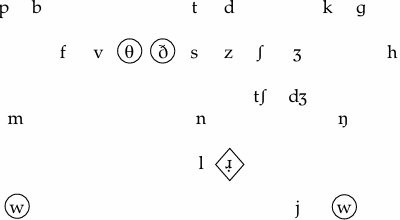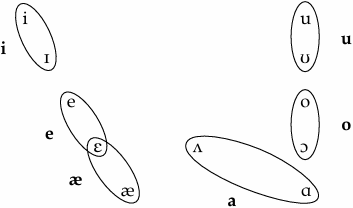

Grammar


Tenses


Present

Present Simple

Present Continuous

Present Perfect

Present Perfect Continuous


Past

Past Simple

Past Continuous

Past Perfect

Past Perfect Continuous


Future

Future Simple

Future Continuous

Future Perfect

Future Perfect Continuous


Parts Of Speech


Nouns

Countable and uncountable nouns

Verbal nouns

Singular and Plural nouns

Proper nouns

Nouns gender

Nouns definition

Concrete nouns

Abstract nouns

Common nouns

Collective nouns

Definition Of Nouns

Animate and Inanimate nouns

Nouns


Verbs

Stative and dynamic verbs

Finite and nonfinite verbs

To be verbs

Transitive and intransitive verbs

Auxiliary verbs

Modal verbs

Regular and irregular verbs

Action verbs

Verbs


Adverbs

Relative adverbs

Interrogative adverbs

Adverbs of time

Adverbs of place

Adverbs of reason

Adverbs of quantity

Adverbs of manner

Adverbs of frequency

Adverbs of affirmation

Adverbs


Adjectives

Quantitative adjective

Proper adjective

Possessive adjective

Numeral adjective

Interrogative adjective

Distributive adjective

Descriptive adjective

Demonstrative adjective


Pronouns

Subject pronoun

Relative pronoun

Reflexive pronoun

Reciprocal pronoun

Possessive pronoun

Personal pronoun

Interrogative pronoun

Indefinite pronoun

Emphatic pronoun

Distributive pronoun

Demonstrative pronoun

Pronouns


Pre Position


Preposition by function

Time preposition

Reason preposition

Possession preposition

Place preposition

Phrases preposition

Origin preposition

Measure preposition

Direction preposition

Contrast preposition

Agent preposition


Preposition by construction

Simple preposition

Phrase preposition

Double preposition

Compound preposition

prepositions


Conjunctions

Subordinating conjunction

Correlative conjunction

Coordinating conjunction

Conjunctive adverbs

conjunctions


Interjections

Express calling interjection

Phrases

Sentences


Grammar Rules

Passive and Active

Preference

Requests and offers

wishes

Be used to

Some and any

Could have done

Describing people

Giving advices

Possession

Comparative and superlative

Giving Reason

Making Suggestions

Apologizing

Forming questions

Since and for

Directions

Obligation

Adverbials

invitation

Articles

Imaginary condition

Zero conditional

First conditional

Second conditional

Third conditional

Reported speech

Demonstratives

Determiners


Linguistics

Phonetics

Phonology

Linguistics fields

Syntax

Morphology

Semantics

pragmatics

History

Writing

Grammar

Phonetics and Phonology

Semiotics


Reading Comprehension

Elementary

Intermediate

Advanced


Teaching Methods

Teaching Strategies

Assessment
Persian (Farsi)–English
المؤلف:
Mehmet Yavas̡
المصدر:
Applied English Phonology
الجزء والصفحة:
P203-C8
2025-03-19
838
Persian (Farsi)–English
The overlay of the L1 consonant phonemes onto the target English inventory results in the following:

Missing target phonemes in L1 include /θ, ð/, which are substituted for by [t, d] respectively. Persian also lacks /w/; although several manuals suggest the rendition as [v], it actually is a frictionless approximant [ʋ].
The r-sound presents a salient phonetic difference, as it is an alveolar trill /r/ in Persian, with its allophones of a voiceless trill [r] in final position, and the tap [ɾ] intervocalically. The result is a clear foreign-accented English target /ɹ̣/.
Vowel mismatches creating under-differentiations are shown in the following:

As in many other languages, the Persian vowels replacing the targets do not have the English distinctions of tense/lax; rather, the quality of the vowels is in between.
The syllable structure of Persian, which can be described as (C) V (C) (C), is responsible for the difficulties experienced with the target double and triple onsets of English. Epenthetic (prothetic in the case of s-clusters) vowels are used to break up the impermissible clusters. Triple codas are problematic, as they do not exist in L1. Also, although Persian allows double codas, the combinations are more limited than those demanded by English; thus learners may experience difficulties with certain targets.
Since Persian stress is generally on the ult, there is considerable difficulty with English stress patterns. Combined with the difficulties in lexical stress, the syllable-timed characteristic of Persian, which does not allow any vowel reduction, may lead to a very different rhythmic pattern than that of English.
The following summarizes the major trouble spots:
• missing target phonemes: /θ, ð, w/;
• salient phonetic differences: r-sounds;
• insufficient separation of target vowel contrasts;
• onset and coda clusters;
• stress;
• rhythm.
The comparisons between English as L2 and several languages as L1 we have looked at repeatedly highlighted certain problematic areas for learners. (Table 1 Differential Treatment of Mismatches) summarizes these important targets that create phonemic as well as some signific ant phonetic clashes (the 15 languages include the 10 we looked at and another 5).
 الاكثر قراءة في Phonology
الاكثر قراءة في Phonology
 اخر الاخبار
اخر الاخبار
اخبار العتبة العباسية المقدسة

الآخبار الصحية















 قسم الشؤون الفكرية يصدر كتاباً يوثق تاريخ السدانة في العتبة العباسية المقدسة
قسم الشؤون الفكرية يصدر كتاباً يوثق تاريخ السدانة في العتبة العباسية المقدسة "المهمة".. إصدار قصصي يوثّق القصص الفائزة في مسابقة فتوى الدفاع المقدسة للقصة القصيرة
"المهمة".. إصدار قصصي يوثّق القصص الفائزة في مسابقة فتوى الدفاع المقدسة للقصة القصيرة (نوافذ).. إصدار أدبي يوثق القصص الفائزة في مسابقة الإمام العسكري (عليه السلام)
(نوافذ).. إصدار أدبي يوثق القصص الفائزة في مسابقة الإمام العسكري (عليه السلام)


















